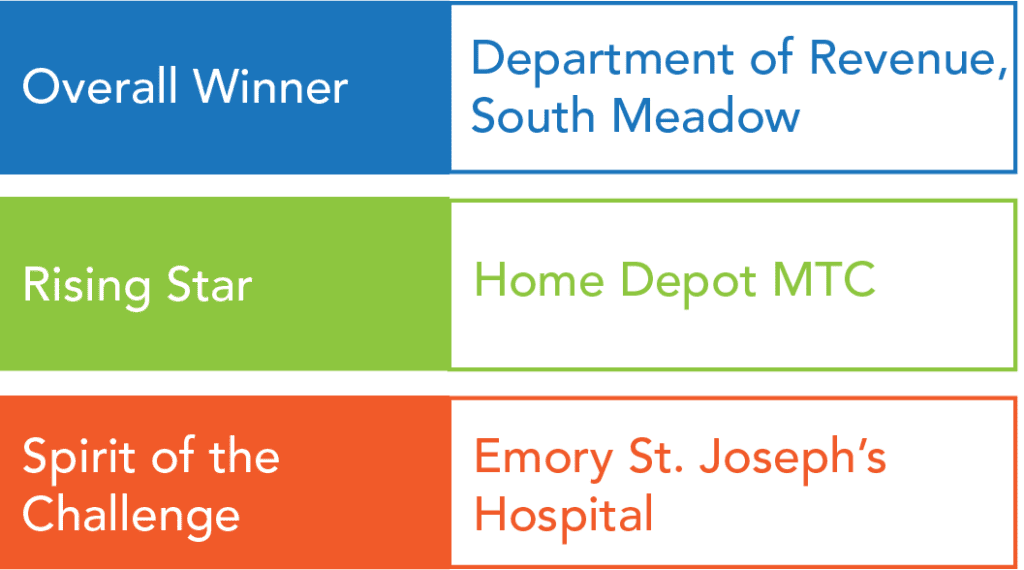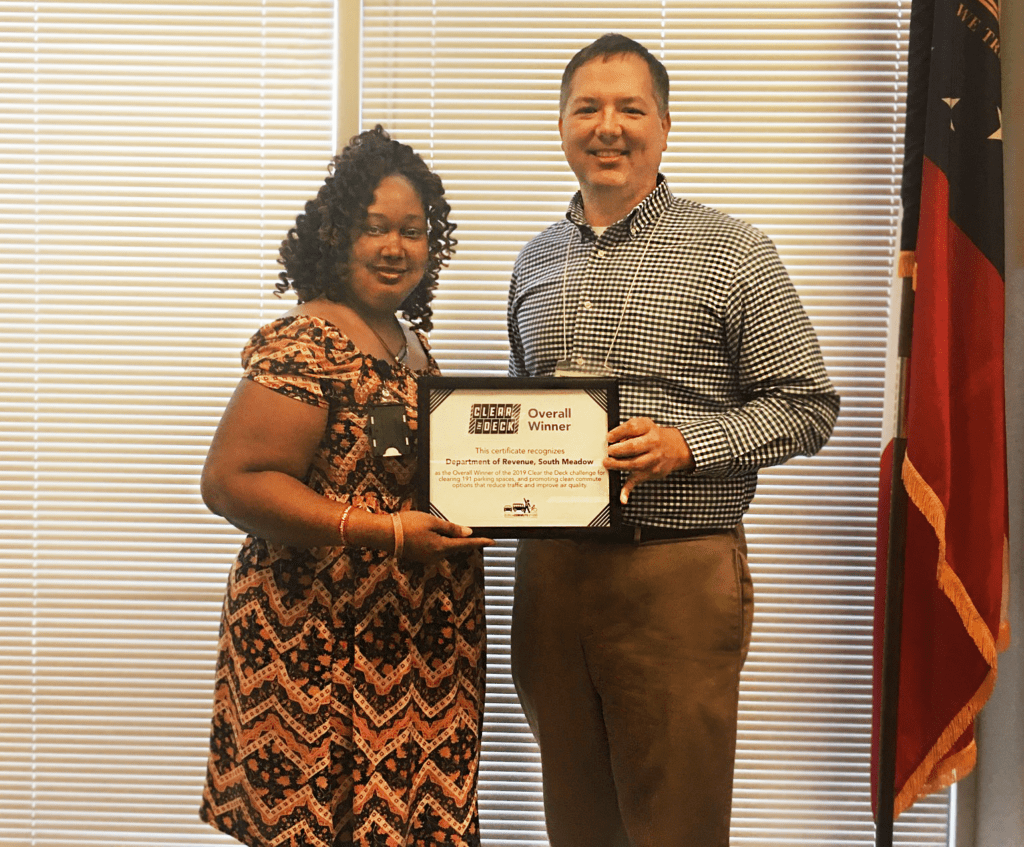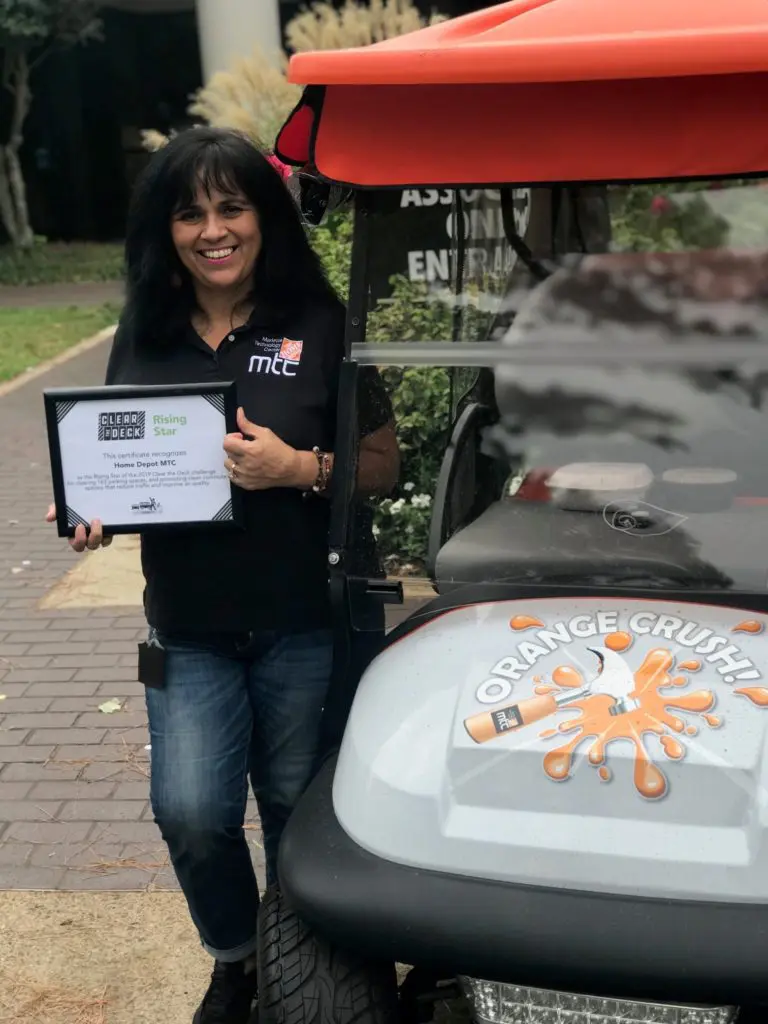Did you know that the average cost of parking infrastructure is over $17,000 per space? With parking decks containing 895 parking spaces on average, each deck costs millions of dollars! The purpose of the Clear the Deck challenge is to help demonstrate the high financial and environmental cost of infrastructure needed to support single-occupancy vehicles. Just imagine what your business could do if they were saving those millions of dollars and all that space! What could you use it for instead of parking?
Our 15 participating employers for this year’s Clear the Deck challenge wanted to find out!

All 15 employers did a fantastic job working to decrease single occupancy vehicles at their work sites, but we’ve awarded three worksites that stood out during the challenge.
Congratulations to our 2019 winners!

“What an amazing opportunity for MTC to do the right thing, living our core values. We cleared 163 parking spaces on a single day – that’s over 6,000 less miles of road traveled! Thank you GCO! Our employees are so excited to be part of this; we look forward to next year.”
-Blanca Rodriguez, Home Depot MTC



Together, the 15 participating employers from across metro Atlanta worked to clear 1,215 parking spaces over the course of a week. That equates to over $6,000 in parking cost savings for commuters, as well as an additional $24,236 saved in maintenance and fuel costs.
But how much space do 1,215 parking spaces actually save? With the average parking space measuring 162 square feet, 1,125 parking spaces is the equivalent of 4.5 acres! That’s the size of:

or

Not only did clearing the deck help to reduce parking costs, but by reducing vehicle trips, these organizations were able to decrease the miles traveled by 44,469, leading to a reduction in CO2 emissions by 34,508 pounds.
Participating organizations had flexibility to choose how and when they would address their number of solo drivers to clear their parking decks. Strategies to reduce their number of single-occupancy drivers included carpooling, taking transit, taking active transportation (like biking or walking) and teleworking. Telework was the method most associated with success during the challenge.

Interested in trying telework at your workplace? Join us for our Telework Summit on Wednesday, November 13, 2019 or participate in our Telework Week from November 18 through November 22.
For more information about telework and other clean commute options, check out our employer resources to see what could work for you and your worksite.
